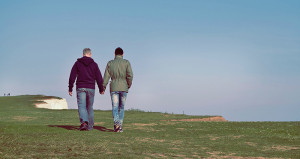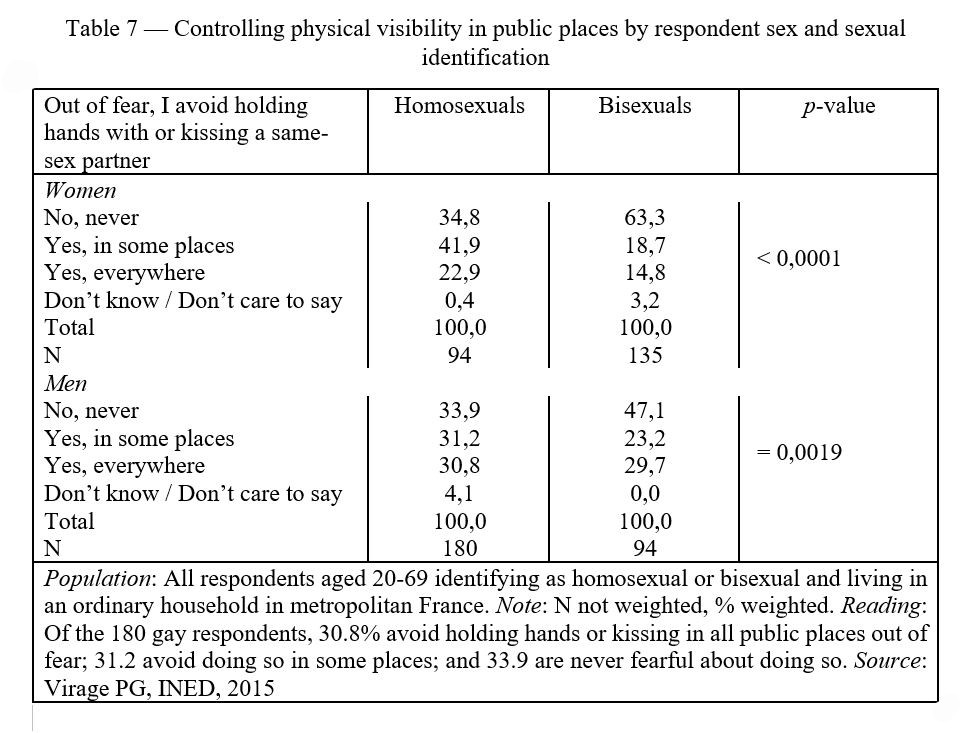Survey of LGB persons on violence experienced in metropolitan France

INED’s 2015 Violence and Gender Relations (VIRAGE) survey of 27,000 people living in metropolitan France covers violence against women and men. It provides first-time data on violence experienced within the family circle as defined below and in public places by persons identifying as lesbian, gay, or bisexual (LGB).
Violence within the family circle or in the person’s immediate social network or surroundings
Intra-family violence was defined extensively for this survey as all types of violence (insults, disparaging remarks, physical brutality, sexual aggression, attempted rape, rape) committed by family members or members of the person’s immediate social network or surroundings (friends, neighbors with whom they are regularly in contact) and experienced in the course of the person’s lifetime.
Regardless of sexual identification, women report more violent acts than men. However, lesbians and bisexual women reported 2.5 times more violent acts than heterosexual women. Among men the figures are lower; once again gays and bisexuals more often report being the target of violence than heterosexual men.
Distinguishing between homosexuals and bisexuals brings new information to light. While the family violence women report tends to be psychological, many lesbians and bi women report physical and sexual violence. Gay and bi men report more sexual violence However, its prevalence among them is much lower than among lesbians and bi women.
Violence in public places
In public places, too, the type of violence experienced varies by sex and sexual identification. Half of lesbians and three-quarters of bi women report being victims of violence, whereas less than one-third of straight women do. While gay and bi men do not report as much violence as their female counterparts, they do report more than straight women—an important point. Some types of violence are clearly sex-specific, and sexual identity aggravates women’s vulnerability in public spaces, especially in connection with unwanted advances, insults, and sexual violence. Gay and bi men also report a great deal of those types of violence: a quarter of gay men, together with a quarter of straight women, report being subjected unwanted sexual advances or insults, and a quarter of bi men report sexual violence—the case for 10% of straight women. Clearly, both male and female bisexual persons are heavily impacted by sexual violence.
Physical violence is the only type for which the number of reports from straight men is higher than for straight women. This is a common finding, consistent with the degree to which men use physical force. However, many bi women, lesbians, and gay men report physical violence.
Lastly, these data attest to the deeply gender-specific nature of violence experienced within the family circle as defined above and in public places, including within sexual minority groups, and to the specific vulnerability of bisexual persons.

